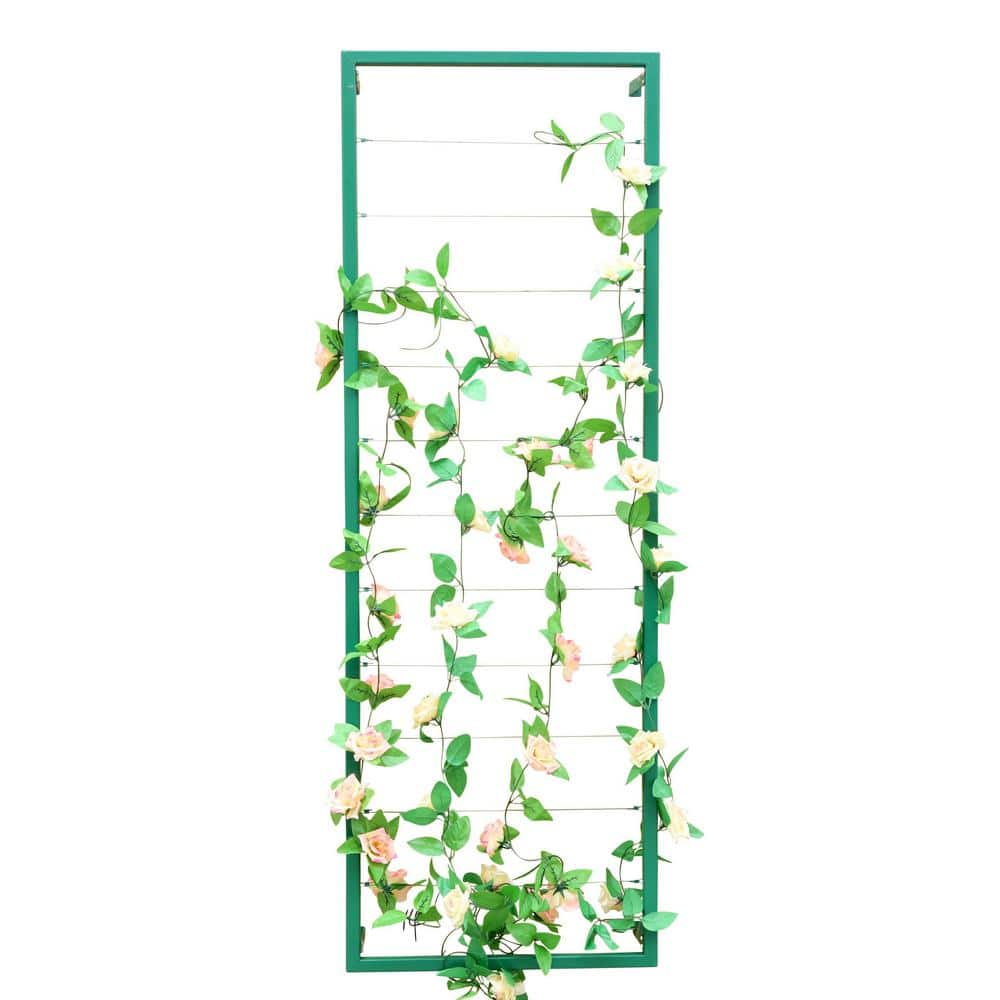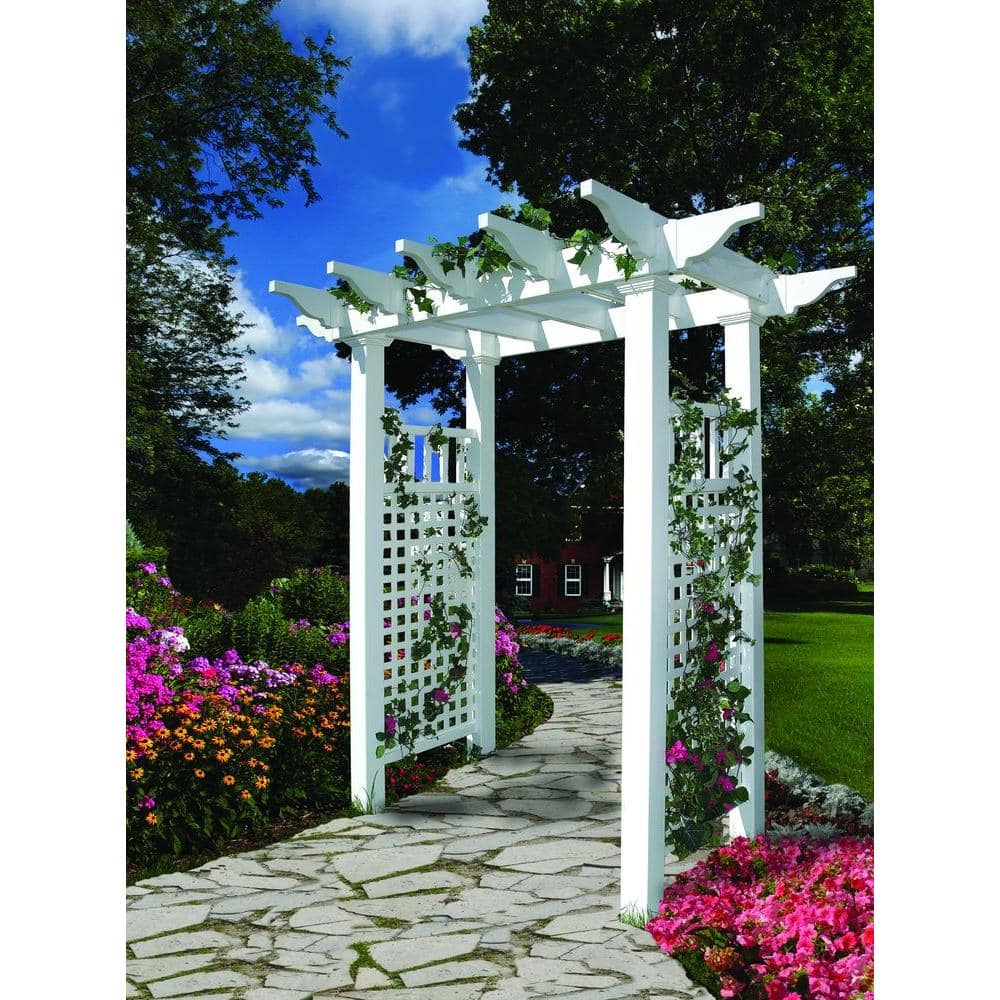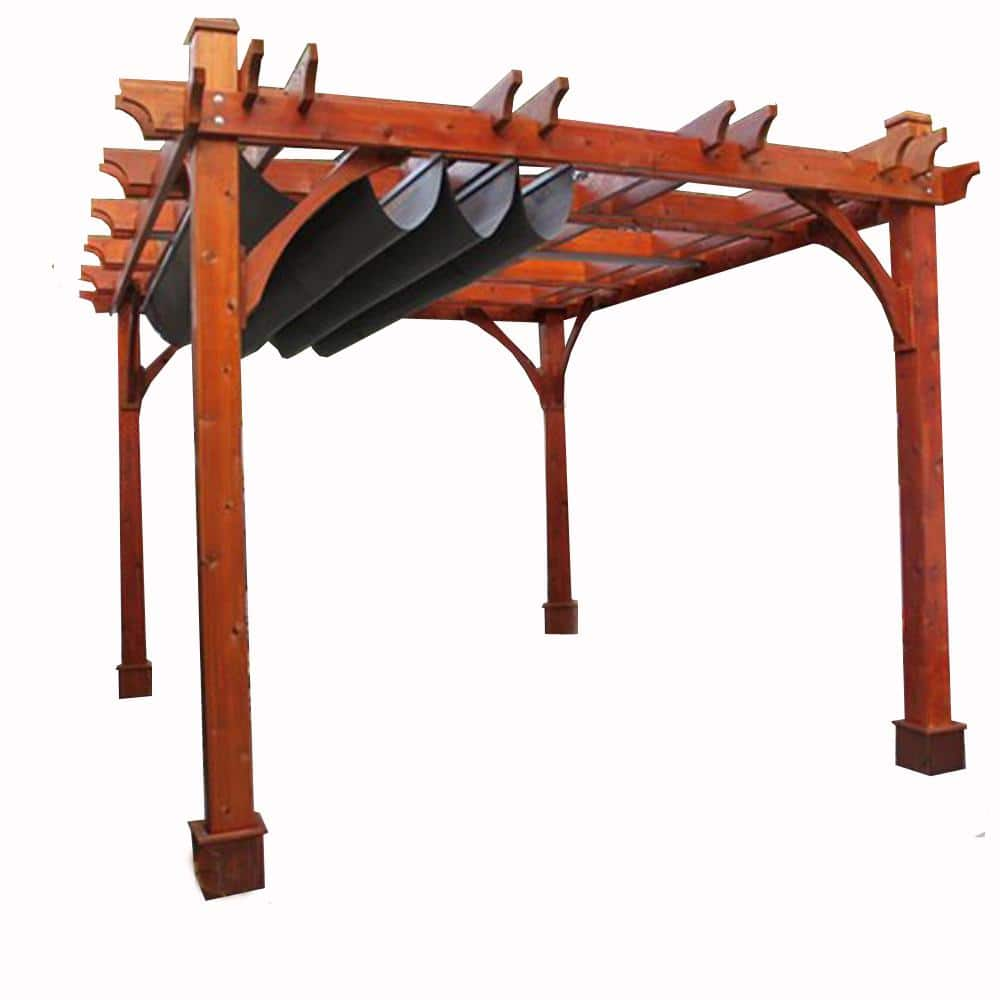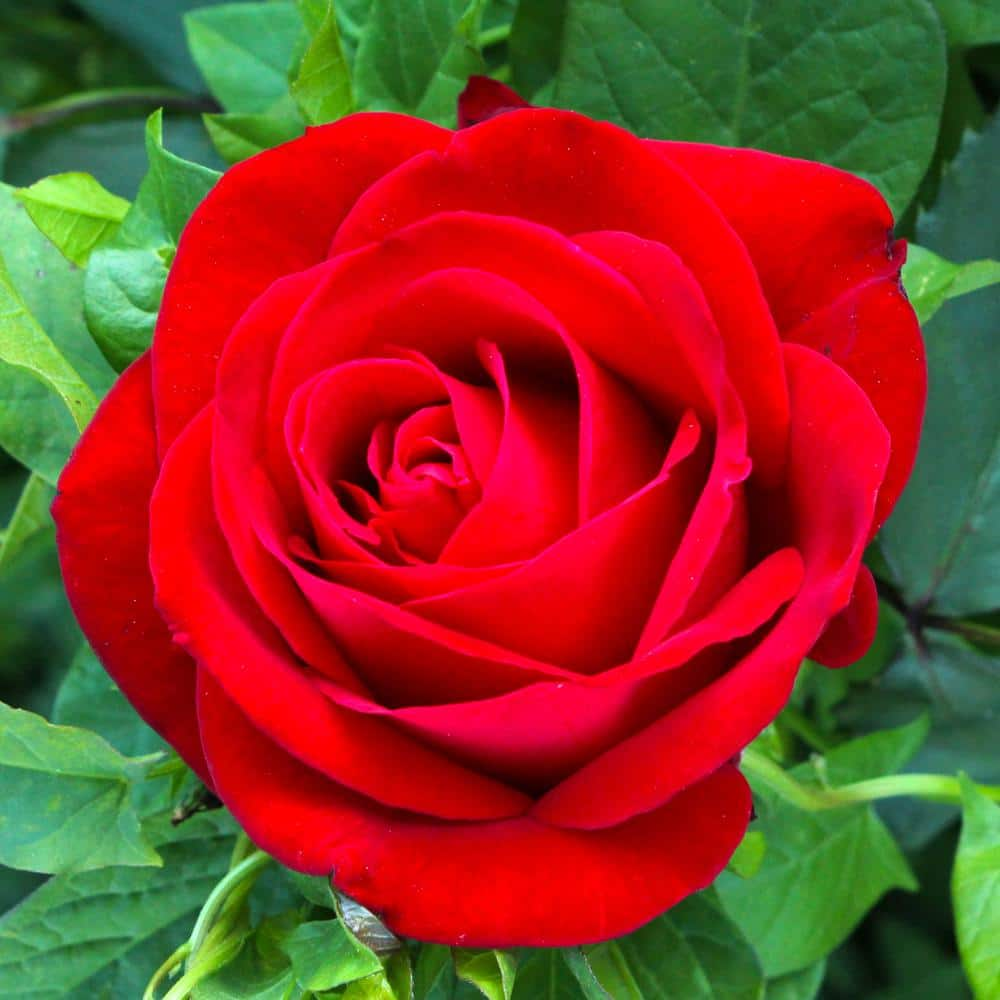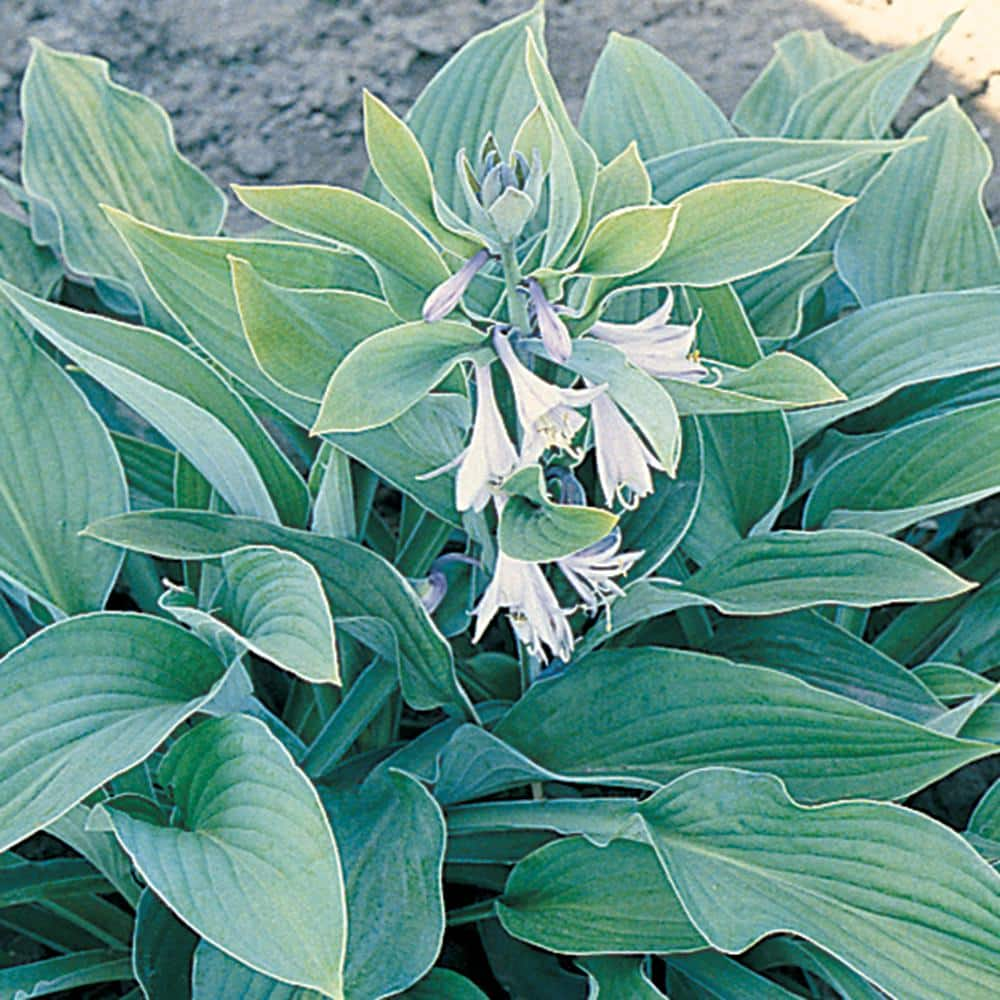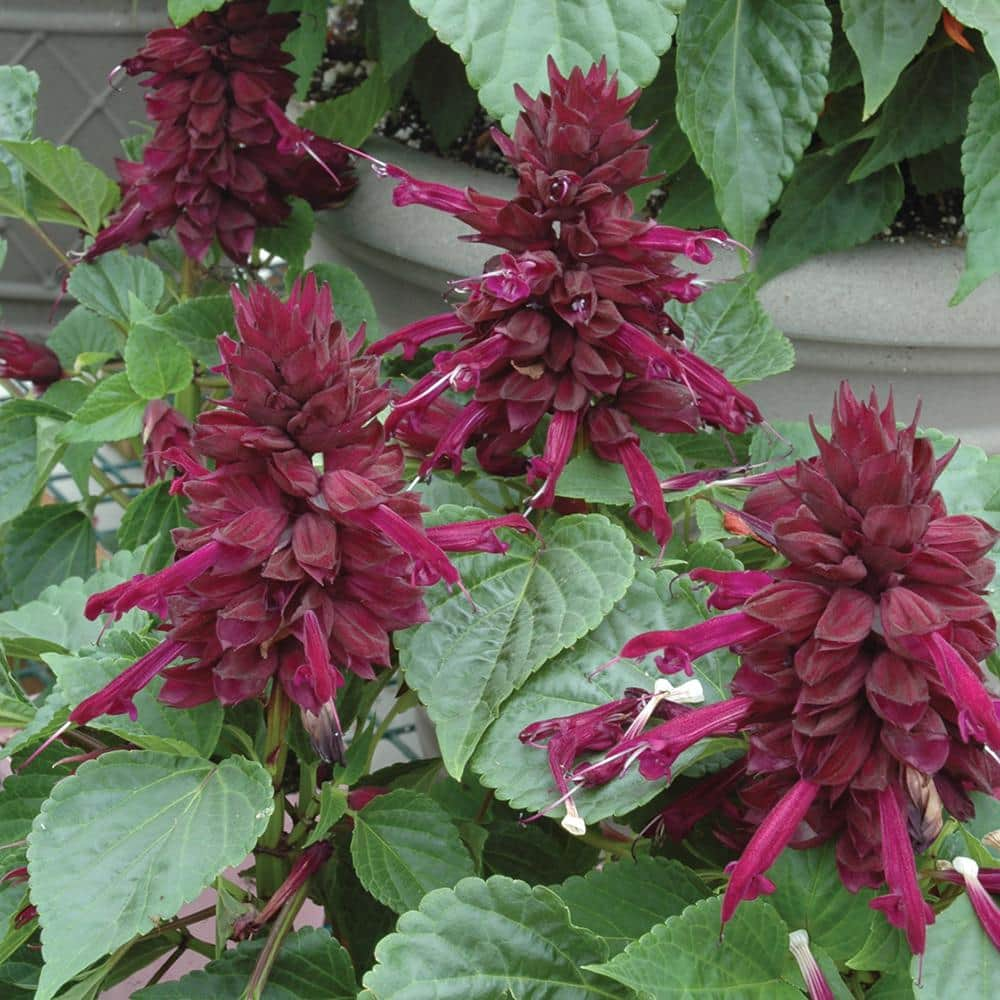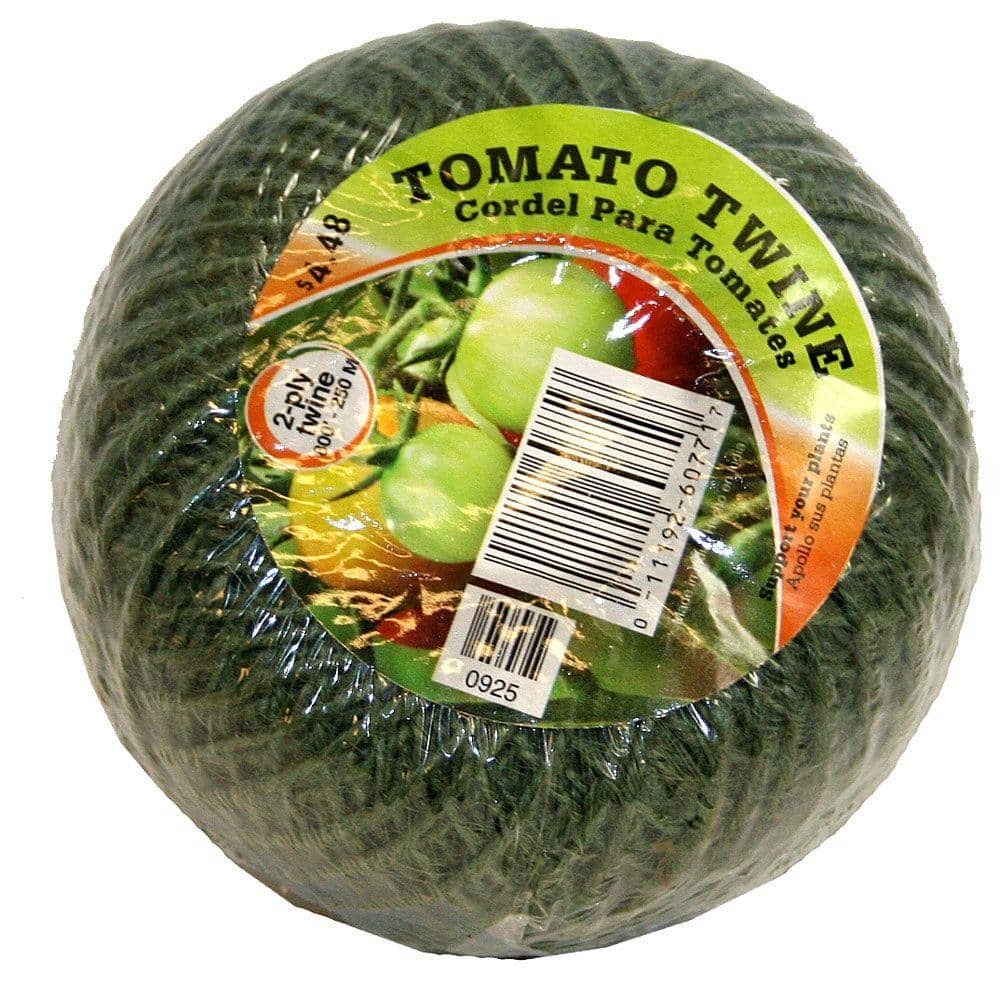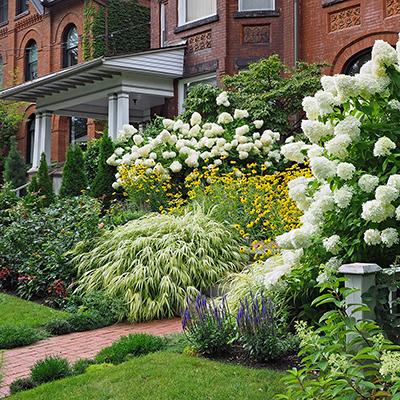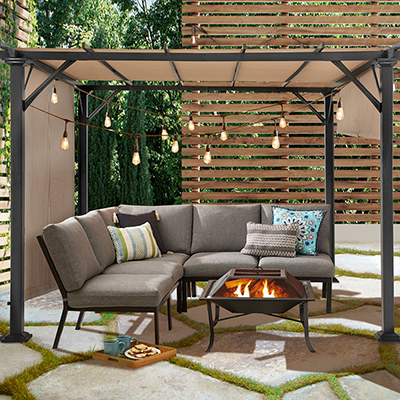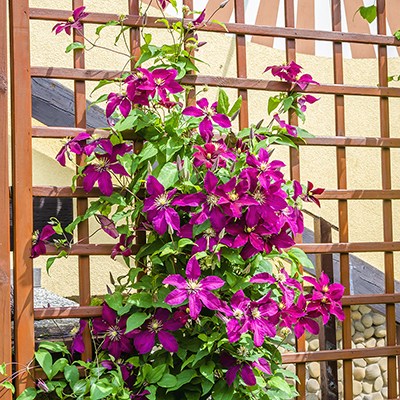Fast Growing Vines for Shade

Last updated April 30, 2025
Vines are useful, versatile plants. Grow morning glories or clematis and you can cover an arbor or pergola with bright blooms. Need privacy? Fast-growing ivy forms a living screen. Best of all, hard-working vines provide cool, leafy shade when the temperatures soar. This guide will highlight fast-growing vines for shade to help cool your outdoor space on hot days.
Vines grow in one of two primary ways: by climbing or twining. Twining plants, like sweet peas and night-blooming moonflowers, wind themselves around supports like trellises, lattices, slender poles, wires or strings. Climbers like ivy have aerial roots that grab onto tree trunks, walls, and other surfaces.
Table of Contents
Tips for Choosing and Using Vines
Tips to Train Your Vines
Bougainvillea
Clematis
Climbing Roses
Honeysuckle
Tips for Choosing and Using Vines

- Decide what your vines will grow on. For vigorous vines or those with heavy, woody stems, like wisteria, use a structure strong enough to hold them. You may need to anchor a trellis or lattice panels in the ground for extra support.
- Watch your garden spot to see how much sun or shade it gets. Choose plants that like your yard's growing conditions. Choose from annuals (vines that die at the end of the season), or perennials (vines that come back).
- Position your lattice or trellis so the vines cast shade on your deck, patio or other area as they grow. Work some compost into the soil before you plant. Water the vine thoroughly and mulch around the roots.
- Try ivy, hops, clematis, honeysuckle, Virginia creeper, jasmine or trumpet vines. You can grow grapes, gourds or vining vegetables like cucumbers on structures that provide good support.
Some popular vines to try:
- Black-eyed Susan vine. Though this flower is most commonly orange, newer varieties bloom in pale yellow, white or pink. These vigorous vines are easy to grow from seed or purchased plants, and they bloom continuously from midsummer until the first hard freeze.
- Morning glories. Turn any fence into a masterpiece, with dramatic morning glories. Cypress vine morning glory, which produces dainty fernlike foliage and small red flowers that hummingbirds find irresistible, is the easiest to grow.
- Sweet peas. Plant these fragrant vines near windows often opened during the day. Sweet peas stop blooming by late summer, however, so plant a few scarlet runner beans when peas are 12 inches tall to continue the show.
- Beans. Blossoming varieties, such as scarlet runner beans and hyacinth beans, have a coarse texture compared to other annual vines, but their exuberant growth makes them ideal if you want to grow a high green screen. These vines climb a 10-foot trellis and keep on going, so they are the best annual vines for tall tripods or string trellises attached to the sunny side of a building.
Tips to Train Your Vines

- Training vines helps them cover the structure you wish to use for shade. As soon as new growth appears, start weaving it horizontally through the openings in a trellis or lattice, and move up as the stems get longer.
- Use plant ties or tie wires to help the vines get established. Keep tie wires slightly loose, so they won’t cut into tender growth. Reposition the ties as needed or add more.
- Don’t fight your vine. Watch to see if it twines to the right or left and train it in that direction.
Bougainvillea

Give your garden a pop of tropical color with gorgeous bougainvillea. This woody vine grows rapidly in hardiness zones 9 through 11. Growing zones are regions created by the U.S. Department of Agriculture. Knowing the zone you live in can help you choose plants that do well in your climate.
From May through July, expect flowers in shades of white, red, pink, orange, yellow or purple. When cared for properly, bougainvillea may bloom again for a shorter period in December.
Bougainvillea is great for dry summer weather. It thrives in all soil types but will develop fastest when the pH is just over 6. Use a soil tester to check how acidic the soil in your yard is.
Tip: To keep bougainvillea climbing, remove shoots that develop on the base of the plant.
Clematis

Clematis comes in many colors, like yellow, lavender, burgundy and pink. Its flowers can spice up any garden and the vine grows quickly to bring shade.
Clematis has leaf stems that coil around structures to climb. Since these stems are short, choose a trellis less than 0.25 inches in diameter.
These vines can thrive for years in growing zones 4 to 8. Clematis, however, doesn't do well when replanted. For best results, choose your site carefully and leave your clematis in place. Blanket the roots with mulch to provide protection. Leave a few inches of space between the mulch and the bottom of the plant to promote airflow.
Climbing Roses

Climbing roses can bring bright colors to the garden and give you the shade you want. Roses don’t climb the way vines do. Help them get started by tying their long, arching stems to a lattice, arbor or other support.
As the stems grow, weave them around and through the frame. Wear gardening gloves so you don’t get stuck by thorns. You’ll find climbing roses in many colors. Some types of roses add a nice scent to your garden.
Honeysuckle

Fill the garden with a sweet scent and pretty color with honeysuckle vine. Newer varieties like Proven Winners' Scentsation Honeysuckle let you enjoy the beauty of the flowers without worries about the plant being invasive.
Honeysuckle vine grows well in zones 5 to 9. Because this vine can easily grow to heights of 8 to 10 feet, choose a tall support structure like an arbor. Position it 6 to 12 inches from the vine to provide space for growth.
Honeysuckle prefers soil that is damp but not soggy. In fertile soil, the plant typically won't need fertilizer.
Mandevilla

Mandevilla are most commonly pink, but they also come in bright red, white and apricot. In any color, the vine adds a cheery touch to gardens, with blossoms from late spring until the first frost.
These pretty perennials are typically easy to grow in zones 9 to 11. They love sandy, well-draining soil. Although they can continue to bloom in dry weather, they prefer moist, but not soggy, conditions.
Start the season off right by fertilizing with a slow-release product in the spring. Alternatively, try using a half-strength liquid fertilizer every two weeks from spring to fall.
Morning Glory

Turn any fence into a masterpiece with dramatic morning glories. Although there are many varieties, cypress vine morning glory is the easiest to grow. Its dainty fernlike foliage gives ample shade, and its small red flowers are favorites of hummingbirds.
In zones 10 through 11, the cypress vine morning glory grows as a perennial. Plant as an annual in zones 6 through 9, and save seeds dropped throughout the season to start next year's vine. Perennials are plants that grow for more than one season without needing to plant new seeds. With annuals, you must plant seeds every year.
Check your morning glory daily as it grows. Its shoots may try to spread outward rather than climb. If this occurs, the shoots can strangle companion plants and cause your vine to break. Redirect new growth onto the support structure as soon as it strays.
Tip: Morning glory and black-eyed Susan make good companions and have similar growing needs.
Vegetable Vines

Get the shade you need, plus delicious crops to add to salads and recipes with vegetable vines. Many types of vegetables and legumes grow on vines, including:
- Chayote
- Cucumber
- Climbing tomato
- Malabar spinach
- Pole beans
- Pumpkin
- Runner beans
- Rocoto pepper
- Sweet peas
Check the plant tags to find options that will grow well in your garden.
Wisteria

Wisteria is a great choice if you have a support structure showing signs of age. Once this vine starts growing, it can cover surfaces.
Ready to plant in zones 5 through 9, wisteria does well in many areas. From late April to early May, the vine produces purple, white, pink or blue flowers.
Wisteria is easy to maintain. The vine won't need fertilizer to climb rapidly and is drought-tolerant. As you train wisteria, keep side branches spaced about 18 inches apart for best results.
Tip: Double the shade and the beauty with clematis as a companion plant for wisteria.
Supply shade for sun-weary plants in your garden with fast-growing vines. Choose plants to suit your growing conditions and train new growth as it appears. The Home Depot is your source for everything you need for fast growng vines for shade, from seeds to support structures.
Whether you're looking for the right tools, plants or potting soil, The Home Depot delivers online orders when and where you need them.
